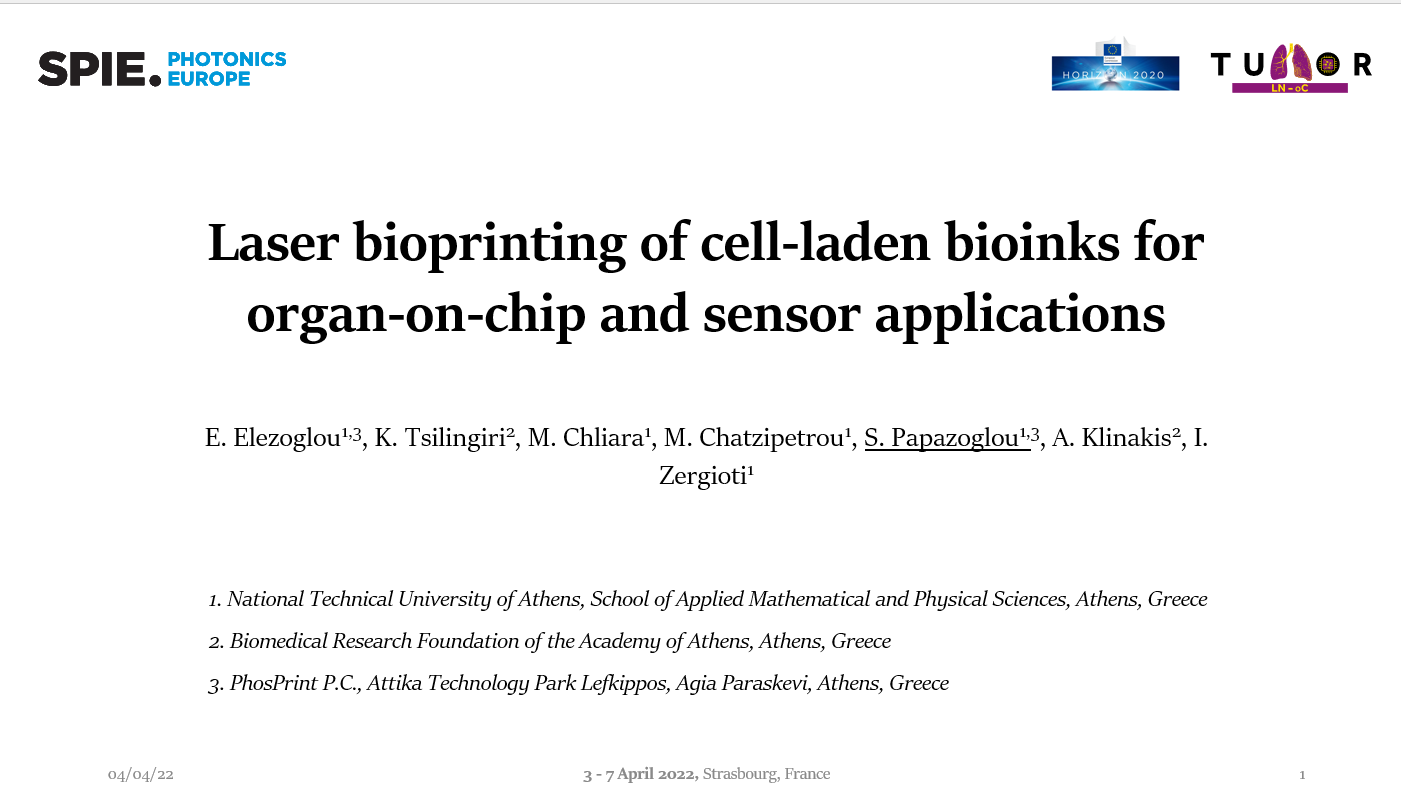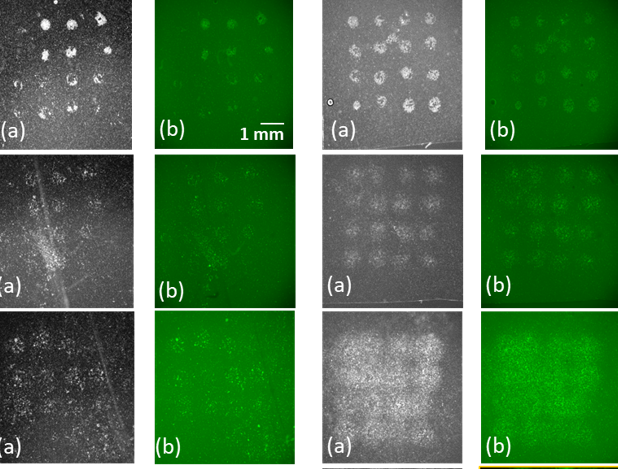Laser bioprinting: a key technology for recapitulating tissue and cell functions
April 12, 2022As one of the components of the Tumor-LN-oC platform, consortium partner PhosPrint is working on a laser bioprinting process for OrganOnChip (OoC) and sensor applications.
Bioprinting is a rapidly expanding additive manufacturing process, in which biomaterials like cells, hydrogels and extracellular matrix components are combined for the development of tissue-like complex structures, able to imitate native tissue functions. Laser bioprinting is one of the main bioprinting techniques. Based on the Laser Induced Forward Transfer technique, laser bioprinting in particular offers the highest degree of spatial resolution (minimum feature of <10 μm) and post-printing cell viability. Most importantly, the high spatial resolution of laser printing technology, allows the precise and topologically defined laser printing of cells and cell-laden bioinks with printing speeds that can reach up to 4 m/s.
The laser-based bioprinting process for LN and tumor cell lines and tumor organoids that is currently being developed during the project will be used to enable the precise placement of cells within microfluidic chip, with unprecedented cell viability. PhosPrint representative Simos Papazoglou presented the project progress at SPIE Photonics Europe last week and thoroughly enjoyed the experience:
“After 2 years of virtual conferences, it was a great pleasure to participate in SPIE Photonics Europe 2022 and present our latest developments related to the Tumor-LN-oC project with the oral presentation entitled “Laser bioprinting of cell-laden bioinks for organ-on-chip and sensor applications”. Many thanks to the SPIE Photonics Europe team for the excellent organization!”
The presentation introduced the results of a joint effort between Tumor-LN-oC partners PhostPrint, NTUA/ICCS and BRFAA. The experiments were conducted using a dual laser beam configuration of cell-laden bioinks within compartmentalized chambers of microfluidic chips, which are designed to serve as Organ-on-Chip devices for cancer metastasis and migration studies. Cell-laden bioinks in this study comprise different hydrogels, cell lines and bioink formulations and printing is performed on polyethylene terephthalate membranes either bare or hydrogel-coated to study cell adhesion and growth. The presentation highlights the unique advantages of digital laser bioprinting for Organ on Chip devices employed in cancer metastasis and healthcare applications in general.


